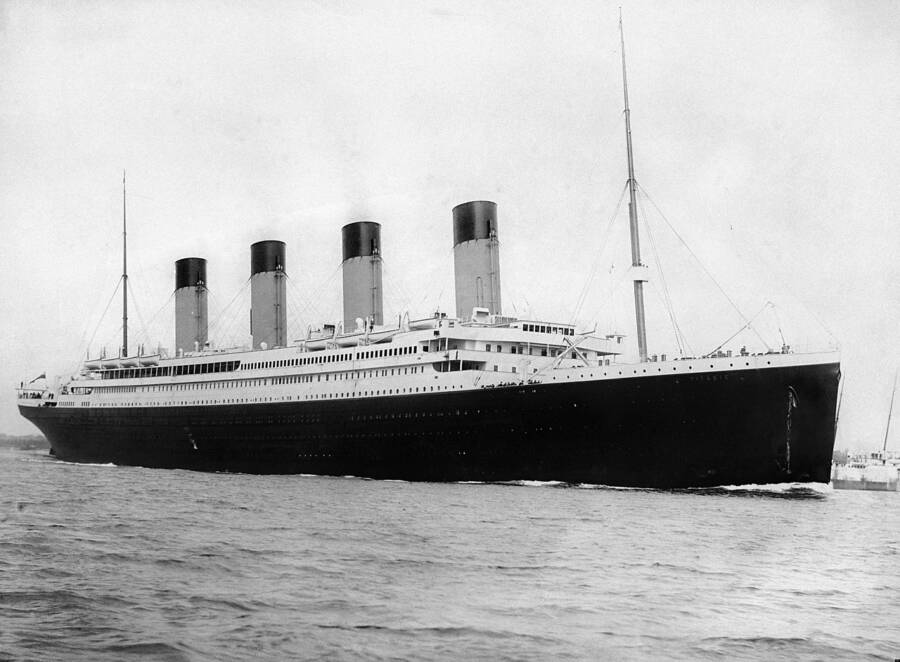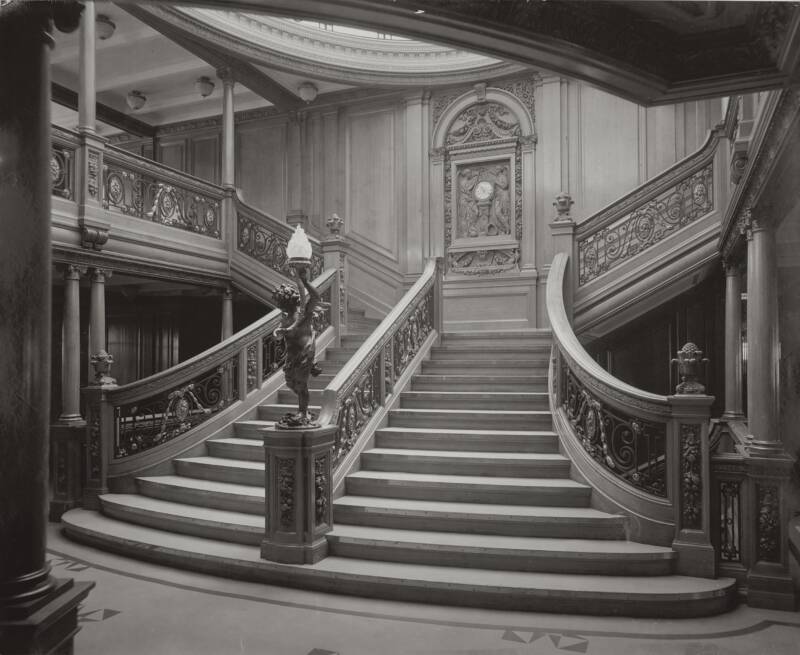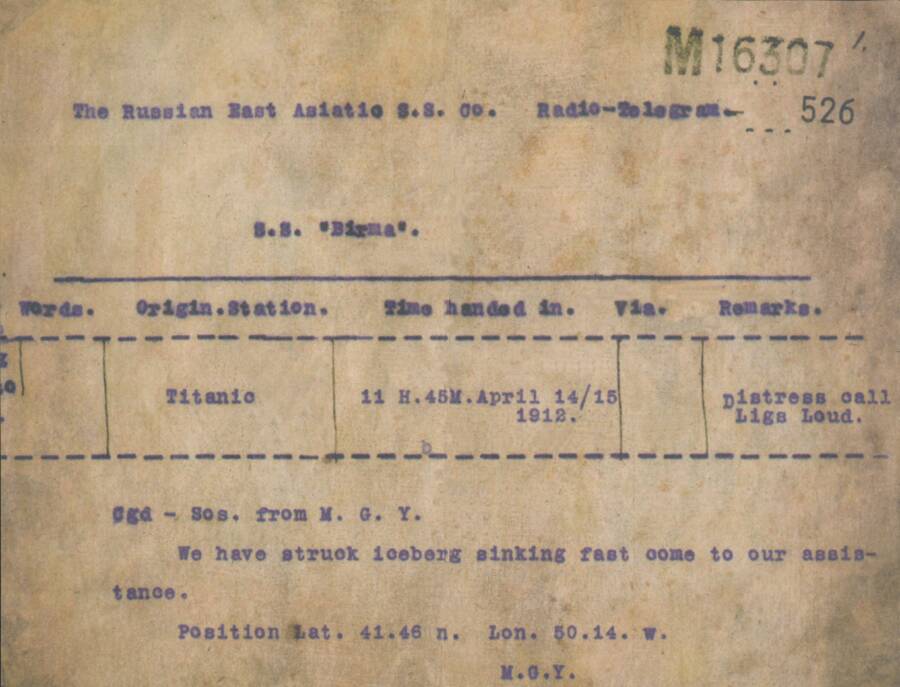On April 15, 1912, the RMS Titanic sank into the North Atlantic after striking an iceberg. These facts capture the magnitude of history’s most infamous maritime disaster.
As the RMS Titanic sank into the icy black waters of the North Atlantic Ocean on April 15, 1912, it took more than two thirds of its 2,200 passengers and crew along with it. When the shocking story made its way back to land, the world struggled to fathom all of the facts about the Titanic and its demise.
Since then, the sinking of this “unsinkable” ship has fascinated people all over the world. What exactly happened on that fateful night? Why did the Titanic sink? How many people died in the water — and who survived?

Wikimedia CommonsThe tragic facts about the Titanic and its sinking present a tale of both great heartbreak and astonishing heroism amid disaster.
These interesting facts about the Titanic reveal everything you need to know about one of the most tragic disasters in human history.
The “Unsinkable” Titanic Was Celebrated As The Largest Ship Of Its Age
Today, the Titanic is synonymous with tragedy. But before April 15, 1912, it represented the marvels of modern technology.
As pictures of the Titanic show, it was the largest — and certainly most opulent — man-made moving object on Earth at the time, measuring 882-feet in length.
Indeed, it was not only the largest passenger ship in the world — it was also the largest ship ever built at 92 feet wide and weighing in at about 46,000 tons.
The Titanic Was Built In Belfast During A ‘Golden Age’ Of Shipbuilding
The Titanic was built at Harland and Wolff shipyard in Belfast, Ireland, and it took 15,000 men and 26 months to build it.
The White Star Line had commissioned the construction of three sister ships — the Titanic, the Olympic, and the Britannic.
Eerily, the Britannic also sank after hitting a mine in World War I. The Olympic, however, survived its career despite once colliding with another ship.
The Ship Was Considered The Epitome Of Luxury

Wikimedia CommonsThe grand staircase of the Titanic‘s sister ship, the Olympic, which is thought to be the tragic ship’s identical twin.
As anyone who has seen the movie Titanic knows, the ship was not only big — it was beautiful and luxurious. First-class passengers could enjoy the grand Titanic staircase, Turkish baths, and fine dining. The first-class menu included oysters, filet mignon, and eclairs.
Such an experience didn’t come cheap, however. First-class suites cost between about $1,700 and $50,000.
Although first-class passengers had a higher survival rate, their expensive cabins didn’t guarantee anything on the night the Titanic sank.
The Doomed Ship Sank On Its Maiden Voyage
The Titanic set off from Southampton, England on April 10, 1912, for its first-ever journey. The ship made stops in Cherbourg, France, and Queenstown, Ireland, which today is called Cobh. Then, the Titanic set sail for New York City.
But disaster struck only a few days into the trip. The ship wasn’t on sea for more than four days before its fateful sinking occurred.
The Titanic Was Doomed After Sideswiping An Iceberg
Around 11:40 p.m. on April 14, 1912, the Titanic struck an iceberg. While trying to steer away from the iceberg at full speed, the ship was scraped on its starboard side, beneath the waterline.
The collision cut a hole in the ship’s hull. Before long, the Titanic began to fill with water.
The Titanic Sank On April 15, 1912 In The North Atlantic Ocean
The RMS Titanic was about 400 miles from Newfoundland when it sank into the frigid waters around 2:20 a.m. on April 15, 1912.
Although its crew sent desperate distress calls, no one came to help. The RMS Titanic slipped beneath the ocean waves.
The Titanic Took More Than Two Hours To Sink — All The While Its Band Played On
After striking the iceberg, the Titanic took two hours and 40 minutes to sink. But as the disaster unfolded, the ship’s band actually did resolve to keep playing, just as the popular lore describes.
Hoping to calm the passengers as they evacuated, the Titanic band played for two hours and five minutes.
The bandleader, Wallace Hartley, believed fiercely in the power of music. As his friend later remarked, “I know he often said that music was a bigger weapon for stopping disorder than anything on earth. He knew the value of the weapon he had, and I think he proved his point.”
Radio Operators Were Warned Multiple Times About Icebergs
Before striking an iceberg and sinking into the ocean, the crew of the Titanic had been warned six times about exactly that very danger. But the messages fell on deaf ears.
The radio operators were overwhelmed with the new radio technology, which resulted in an overwhelming number of messages flying back and forth.
At one point, the SS Californian sent a warning that it was already surrounded by ice. The Titanic’s chief telegraphist Jack Phillips snapped: “Shut up! I am busy.”

Print Collector/Getty ImagesOne of the Titanic‘s final telegrams reads: “We have struck iceberg sinking fast come to our assistance.”
Consequently, the telegraphist on the Californian went to bed and didn’t hear the Titanic‘s distress call a few hours later.
Phillips — who bravely sent distress calls until the Titanic sank — went down with the ship.





